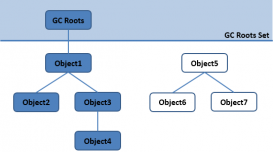前言
• Java 8 中引入很多有意思的新特性,本篇文章我们来聊聊其中三个比较重要的特性:函数式接口、Lambda表达式、Stream流,我们分别从示例用法、底层原理、最佳实践三个方面来了解这些特性。
版本
• JDK 8
函数式接口
定义
• 函数式接口是 Java 8 引入的一种接口,它只包含一个抽象方法。函数式接口的存在是为了支持 Lambda 表达式,使得我们可以使用更简洁、更灵活的方式编写匿名函数。
@FunctionalInterface
interface Calculator {
int add(int a, int b);
default int subtract(int a, int b) {
return a - b;
}
static int multiply(int a, int b) {
return a * b;
}
}
• @FunctionalInterface 注解是可选的,推荐使用。该注解会让编译器强制检查接口是否满足函数式接口定义。
特点
• 只能有一个抽象方法,可以有参数和返回值。
• 可以包含多个默认方法(使用 default 关键字)和静态方法(使用 static 关键字),不违反函数式接口的定义。
说明: 默认方法和静态方法在 Java 8 中引入,目的是在引入新功能的同时不改变已有实现。 从而实现接口的的逐步演进,不需要同时修改所有实现类。
使用
@FunctionalInterface
interface Calculator {
int add(int a, int b);
default int subtract(int a, int b) {
return a - b;
}
static int multiply(int a, int b) {
return a * b;
}
}
public class TestMain {
public static void main(String[] args) {
Calculator addCalculator = (a, b) -> a + b;
System.out.println(addCalculator.add(1, 2));
System.out.println(addCalculator.subtract(1, 2));
}
}
Lambda表达式
• Lambda 表达式是一种用于传递匿名函数的简洁语法。它提供了一种更紧凑的方式来表示可以传递给方法的代码块。Lambda 表达式主要用于函数式接口,可以看作是对函数式接口的一个实现。
Calculator addCalculator = (a, b) -> a + b;
主要场景
• 简化匿名内部类的写法,但无法简化所有匿名内部类,只能简化满足函数式接口的匿名内部类。
用法
无参写法
• 实现创建一个简单的线程。
@FunctionalInterface
public interface Runnable {
/**
* When an object implementing interface <code>Runnable</code> is used
* to create a thread, starting the thread causes the object's
* <code>run</code> method to be called in that separately executing
* thread.
* <p>
* The general contract of the method <code>run</code> is that it may
* take any action whatsoever.
*
* @see java.lang.Thread#run()
*/
public abstract void run();
}
// JDK7 匿名内部类写法
new Thread(new Runnable() {// 接口名
@Override
public void run() {// 方法名
System.out.println("Thread run()");
}
}).start();
// JDK8 Lambda表达式代码块写法
new Thread(
() -> System.out.print("Thread run()")
).start();
有参写法
• 实现根据列表中字符串元素长度进行排序。
@FunctionalInterface
public interface Comparator<T> {
int compare(T o1, T o2);
}
// JDK7 匿名内部类写法
List<String> list = Arrays.asList("my", "name", "is", "lorin");
list.sort(new Comparator<String>() {
@Override
public int compare(String s1, String s2) {
if (s1 == null)
return -1;
if (s2 == null)
return 1;
return s1.length() - s2.length();
}
});
// JDK8 Lambda表达式写法
List<String> list = Arrays.asList("my", "name", "is", "lorin");
list.sort((s1, s2) -> {// 省略参数表的类型
if (s1 == null)
return -1;
if (s2 == null)
return 1;
return s1.length() - s2.length();
});
Lambda 表达式的基础:函数式接口 + 类型推断
• Lambda 表达式除了上文中提到的函数式接口,还有一个比较重要的特性来支持 Lambda 表达式简洁的写法,即类型推断:指编译器根据上下文信息推断变量的类型,而不需要显式地指定类型。类型推断的引入是为了简化代码,并提高代码的可读性和可维护性。
CustomerInterface<Integer> action = (Integer t) -> {
System.out.println(this);
return t + 1;
};
// 使用类型推断
CustomerInterface<Integer> action1 = t -> {
System.out.println(this);
return t + 1;
};
自定义函数接口使用 Lambda 表达式
• 首先定义一个函数接口,函数作用是对传入的元素进行操作,最后返回操作后的元素。
// 自定义函数接口
@FunctionalInterface
public interface CustomerInterface<T> {
T operate(T t);
}
• 自定义的 MyStream 类来使用自定义的函数接口。
class MyStream<T> {
private final List<T> list;
MyStream(List<T> list) {
this.list = list;
}
public void customerForEach(CustomerInterface<T> action) {
Objects.requireNonNull(action);
list.replaceAll(action::operate);
}
}
• 使用自定义的 MyStream 类实现对每一个元素的 +1 操作。
public class TestMain {
public static void main(String[] args) {
List<Integer> arr = Arrays.asList(1, 2, 3, 4);
MyStream<Integer> myStream = new MyStream<>(arr);
myStream.customerForEach(t -> t + 1);
System.out.println(arr);
}
}
// 输出结果
[2, 3, 4, 5]
底层实现
• 上面我们回顾了 JDK7 和 JDK8 对匿名内部类的写法,我们发现 JDK8 中的实现更加简洁了,但实际上不仅仅语法上更加简洁,即不是纯粹的语法糖,底层实现也发生了一些变化,下面我们一起来看一下。
JDK7
- • 由于 JDK7 并不支持函数式接口、Lambda表达式,所以我们先对代码做一些简单的改造:
public interface CustomerInterface<T> {
T operate(T t);
}
class MyStream<T> {
private final List<T> list;
MyStream(List<T> list) {
this.list = list;
}
public void customerForEach(CustomerInterface<T> action) {
Objects.requireNonNull(action);
for (int i = 0; i < list.size(); i++) {
list.set(i, action.operate(list.get(i)));
}
}
}
public class TestMain {
public static void main(String[] args) {
List<Integer> arr = Arrays.asList(1, 2, 3, 4);
MyStream<Integer> myStream = new MyStream<>(arr);
myStream.customerForEach(new CustomerInterface<Integer>() {
@Override
public Integer operate(Integer integer) {
return integer + 1;
}
});
System.out.println(arr);
}
}
- • 使用 javap 分析字节码:
javap -c -p .\TestMain.class
Compiled from "TestMain.java"
public class test.TestMain {
public test.TestMain();
Code:
0: aload_0
1: invokespecial #1 // Method java/lang/Object."<init>":()V
4: return
public static void main(java.lang.String[]);
Code:
0: iconst_4
1: anewarray #2 // class java/lang/Integer
4: dup
5: iconst_0
6: iconst_1
7: invokestatic #3 // Method java/lang/Integer.valueOf:(I)Ljava/lang/Integer;
10: aastore
11: dup
12: iconst_1
13: iconst_2
14: invokestatic #3 // Method java/lang/Integer.valueOf:(I)Ljava/lang/Integer;
17: aastore
18: dup
19: iconst_2
20: iconst_3
21: invokestatic #3 // Method java/lang/Integer.valueOf:(I)Ljava/lang/Integer;
24: aastore
25: dup
26: iconst_3
27: iconst_4
28: invokestatic #3 // Method java/lang/Integer.valueOf:(I)Ljava/lang/Integer;
31: aastore
32: invokestatic #4 // Method java/util/Arrays.asList:([Ljava/lang/Object;)Ljava/util/List;
35: astore_1
36: new #5 // class test/MyStream
39: dup
40: aload_1
41: invokespecial #6 // Method test/MyStream."<init>":(Ljava/util/List;)V
44: astore_2
45: aload_2
46: new #7 // class test/TestMain$1 创建匿名内部类
49: dup
50: invokespecial #8 // Method test/TestMain$1."<init>":()V
53: invokevirtual #9 // Method test/MyStream.customerForEach:(Ltest/CustomerInterface;)V
56: getstatic #10 // Field java/lang/System.out:Ljava/io/PrintStream;
59: aload_1
60: invokevirtual #11 // Method java/io/PrintStream.println:(Ljava/lang/Object;)V
63: return
}
• 从上面 46 行我们可以看出,JDK7 创建了真实的的匿名内部类。
JDK8
• JDK8 我们以上述 自定义函数接口使用 Lambda 表达式 为例:
• 使用 javap 分析字节码可以发现,Lambda 表达式 被封装为一个内部的私有方法并通过 InvokeDynamic 调用,而不是像 JDK7 那样创建一个真实的匿名内部类。
javap -c -p .\TestMain.class
Compiled from "TestMain.java"
public class test.TestMain {
public test.TestMain();
Code:
0: aload_0
1: invokespecial #1 // Method java/lang/Object."<init>":()V
4: return
public static void main(java.lang.String[]);
Code:
0: iconst_4
1: anewarray #2 // class java/lang/Integer
4: dup
5: iconst_0
6: iconst_1
7: invokestatic #3 // Method java/lang/Integer.valueOf:(I)Ljava/lang/Integer;
10: aastore
11: dup
12: iconst_1
13: iconst_2
14: invokestatic #3 // Method java/lang/Integer.valueOf:(I)Ljava/lang/Integer;
17: aastore
18: dup
19: iconst_2
20: iconst_3
21: invokestatic #3 // Method java/lang/Integer.valueOf:(I)Ljava/lang/Integer;
24: aastore
25: dup
40: aload_1
41: invokespecial #6 // Method test/MyStream."<init>":(Ljava/util/List;)V
44: astore_2
45: aload_2
46: invokedynamic #7, 0 // InvokeDynamic #0:operate:()Ltest/CustomerInterface; InvokeDynamic 调用
51: invokevirtual #8 // Method test/MyStream.customerForEach:(Ltest/CustomerInterface;)V
54: getstatic #9 // Field java/lang/System.out:Ljava/io/PrintStream;
57: aload_1
58: invokevirtual #10 // Method java/io/PrintStream.println:(Ljava/lang/Object;)V
61: return
private static java.lang.Integer lambda$main$0(java.lang.Integer); // lambda 表达式被封装为内部方法
Code:
0: aload_0
1: invokevirtual #11 // Method java/lang/Integer.intValue:()I
4: iconst_1
5: iadd
6: invokestatic #3 // Method java/lang/Integer.valueOf:(I)Ljava/lang/Integer;
9: areturn
}
this 的含义
• 从上面我们可以知道 JDK7 和 JDK8 对匿名内部类不仅写法上不一致,底层原理也不相同。因此,如果我们在两种写法种使用 this 关键字,两者是一样的?先说答案:不一样,JDK7 的 this 指向创建的匿名内部内,而 JDK8 中Lambda表达式并不会创建真实存在的类,指向的是当前类。
• 下面我们结合实际案例来看一下:
JDK7
CustomerInterface<Integer> action = new CustomerInterface<Integer>() {
@Override
public Integer operate(Integer integer) {
System.out.println(this);
return integer + 1;
}
};
CustomerInterface<Integer> action1 = new CustomerInterface<Integer>() {
@Override
public Integer operate(Integer integer) {
System.out.println(this);
return integer + 1;
}
};
System.out.println(action.operate(2));
System.out.println(action1.operate(2));
// 输出
test.TestMain$1@8939ec3
3
test.TestMain$2@456bf9ce
3
• 可以看到两个 this 输出地址不同,分别指向自身的匿名内部类对象。
JDK8
public class TestMain {
CustomerInterface<Integer> action = t -> {
System.out.println(this);
return t + 1;
};
CustomerInterface<Integer> action1 = t -> {
System.out.println(this);
return t + 1;
};
public static void main(String[] args) {
TestMain testMain = new TestMain();
System.out.println(testMain.action.operate(2));
System.out.println(testMain.action1.operate(2));
}
}
// 输出
test.TestMain@1d81eb93
3
test.TestMain@1d81eb93
3
• 可以看到,两个 this 都指向同一个 testMain 对象,因为我们从前文我们可以知道 JDK8 中 Lambda 表达式 被封装为一个内部的私有方法并通过 InvokeDynamic 调用,而不是创建一个真实的匿名内部类。
Stream
• Stream 是一种用于处理集合数据的高级抽象,它允许我们以声明式的方式对集合进行操作。
• 函数式接口提供了Lambda表达式的类型,Lambda表达式提供了一种简洁的语法来定义匿名内部类,而 Stream 提供了一种声明式的方式来处理集合数据,并与Lambda表达式无缝结合,共同支持函数式编程在Java中的应用。
特点
• Stream 不存储数据,按照特定的规则进行计算,最后返回计算结果。
• Stream 不改变源数据源,而返回一个新的数据源。
• Stream 是惰性计算,只有调用终端操作时,中间操作才会执行。
操作
 图片
图片
Stream 流创建
• Stream 流支持并行流和串行流两种方式,串行流每个元素按照顺序依次处理,并行流会将流中元素拆分为多个子任务进行处理,最后再合并结果,从而提高处理效率。
List<String> list = Arrays.asList("11", "2222", "333333");
// 串行流
list.stream().map(String::toString).collect(Collectors.toList());
// 并行流
list.parallelStream().map(String::toString).collect(Collectors.toList());
list.stream().parallel().map(String::toString).collect(Collectors.toList());
中间操作和终端操
中间操作
• 只会记录操作不会立即执行,中间操作可以细分为:无状态 Stateless 和 有状态 Stateful 两种。
无状态 Stateless
• 指元素不受其它元素影响,可以继续往下执行,比如 filter() map() mapToInt() 等。
filter
• 用于筛选符合条件的元素,下一步只会拿到符合条件的元素。
List<String>strings = Arrays.asList("abc", "", "bc", "efg", "abcd","", "jkl");
// 获取空字符串的数量
long count = strings.stream().filter(string -> string.isEmpty()).count();
map
• 用于将一个流中的元素通过指定的映射函数转换为另一个流。返回类型必须是传入类型或传入类型的子类型。
List<Integer> numbers = Arrays.asList(1, 2, 3, 4, 5);
// 使用 map 方法将列表中的每个元素乘以2
List<Integer> doubledNumbers = numbers.stream()
.map(n -> n * 2)
.collect(Collectors.toList());
mapToInt() mapToLong() 等
• mapToInt() 方法用于将流中的元素映射为 int 类型的流。IntStream 是针对 int 类型数据进行优化的特殊流,提供了更高效的操作和更方便的处理方式。当处理基本类型 int 数据时,推荐使用 IntStream,可以提高代码的性能和可读性。
• mapToLong() 方法用于将流中的元素映射为 long 类型的流。
// 整数列表
Long[] numbers = {1, 2, 3, 4, 5};
// 使用 mapToLong() 方法将每个整数乘以自身,并收集到一个 LongStream 流中
LongStream squares = Arrays.stream(numbers).mapToLong(t -> t * t);
squares.sum();
flatMap() flatMapToInt() 等
• flatMap()用于将流中的每个元素映射为一个流,然后将所有映射得到的流合并成一个新的流。
• flatMapToInt() 和 flatMap() 的区别在于返回的流为 IntStream。
// 字符串列表
List<String> words = Arrays.asList("Java is fun", "Stream API is powerful", "FlatMap is useful");
// 使用 flatMap() 提取每个字符串中的单词,并放入一个新的流中
Stream<String> wordStream = words.stream()
.flatMap(str -> Arrays.stream(str.split("\\s+")));
// 打印流中的每个单词
wordStream.forEach(System.out::println);
// 输出
Java
is
fun
Stream
API
is
powerful
FlatMap
is
useful
peek
• 用于在流的每个元素上执行指定的操作,同时保留流中的元素。peek() 方法不会改变流中的元素,而是提供一种查看每个元素的机会,通常用于调试、日志记录或记录流中的中间状态。
// 整数列表
List<Integer> numbers = Arrays.asList(1, 2, 3, 4, 5);
// 使用 peek() 打印每个元素,并将元素乘以2,然后收集到一个新的列表中
List<Integer> doubledNumbers = numbers.stream()
.peek(num -> System.out.println("Original: " + num))
.map(num -> num * 2)
.peek(doubledNum -> System.out.println("Doubled: " + doubledNum))
.collect(Collectors.toList());
// 打印新列表中的元素
System.out.println("Doubled Numbers: " + doubledNumbers);
有状态 Stateful
• 指元素受到其它元素影响,比如 distinct() 去重,需要处理完所有元素才能往下执行。
distinct
• 用于去除流中重复的元素,返回一个去重后的新流。distinct() 方法根据元素的 equals() 方法来判断是否重复,因此流中的元素必须实现了 equals() 方法以确保正确的去重。
// 字符串列表
List<String> words = Arrays.asList("hello", "world", "hello", "java", "world");
// 使用 distinct() 方法获取不重复的单词,并收集到一个新的列表中
List<String> uniqueWords = words.stream()
.distinct()
.collect(Collectors.toList());
// 打印不重复的单词列表
System.out.println("Unique Words: " + uniqueWords);
limit
• 用于限制流中元素的数量,返回一个包含了指定数量元素的新流。limit() 方法通常用于在处理大型数据集时,限制处理的数据量,以提高性能或减少资源消耗。需要注意的,返回的元素不一定是前三个。
// 整数列表
List<Integer> numbers = Arrays.asList(1, 2, 3, 4, 5);
// 使用 limit() 方法获取前3个元素,并收集到一个新的列表中
List<Integer> limitedNumbers = numbers.stream()
.limit(3)
.collect(Collectors.toList());
// 打印前3个元素
System.out.println("Limited Numbers: " + limitedNumbers);
终端操作
• 调用终端操作计算会立即开始执行,终端操作可以细分为:非短路操作 和 短路操作。
非短路操作
• 非短路操作:需要处理完所有元素才可以拿到结果,比如 forEach() forEachOrdered()。
collect
• 将流中的元素收集到一个集合或者其他数据结构中。下面是一些常见的用法:
// 将流中的元素收集到一个列表中:
List<String> list = stream.collect(Collectors.toList());
// 将流中的元素收集到一个集合中:
Set<String> set = stream.collect(Collectors.toSet());
// 将流中的元素收集到一个指定类型的集合中:
ArrayList<String> arrayList = stream.collect(Collectors.toCollection(ArrayList::new));
// 将流中的元素收集到一个字符串中,使用指定的分隔符连接:
String result = stream.collect(Collectors.joining(", "));
// 将流中的元素收集到一个 Map 中,根据指定的键值对:
Map<Integer, String> map = stream.collect(Collectors.toMap(String::length, Function.identity()));
// 对流中的元素进行分组:
Map<Integer, List<String>> groupedMap = stream.collect(Collectors.groupingBy(String::length));
// 对流中的元素进行分区:
Map<Boolean, List<String>> partitionedMap = stream.collect(Collectors.partitioningBy(s -> s.length() > 3));
// 对流中的元素进行统计:
IntSummaryStatistics statistics = stream.collect(Collectors.summarizingInt(String::length));
reduce
- • 用于将流中的元素组合成一个值。
- • 灵活性:reduce() 方法提供了灵活的参数选项,可以根据需求选择不同的重载形式,包括指定初始值、选择累加器函数和组合器函数等,使得它可以适用于各种场景。
- • 统一操作:reduce() 方法提供了一种统一的方式来对流中的元素进行组合操作,不论是求和、求积、字符串拼接还是其他任何类型的组合操作,都可以使用 reduce() 方法来实现,这样可以减少代码重复,提高代码的可读性和可维护性。
- • 并行流支持:在并行流中,reduce() 方法可以更高效地利用多核处理器,通过并行化操作来提高性能。使用合适的组合器函数,可以在并行流中正确地合并部分结果,从而实现更高效的并行计算。而 sum() 函数是串行的。
// 将流中的元素累加求和:
List<Integer> numbers = Arrays.asList(1, 2, 3, 4, 5);
Optional<Integer> sum = numbers.stream().reduce((a, b) -> a + b);
System.out.println("Sum: " + sum.orElse(0)); // 输出 15
// 使用初始值进行累加求和:
List<Integer> numbers = Arrays.asList(1, 2, 3, 4, 5);
int sum = numbers.stream().reduce(0, (a, b) -> a + b);
System.out.println("Sum: " + sum); // 输出 15
// 使用初始值和组合器函数在并行流中进行累加求和:
List<Integer> numbers = Arrays.asList(1, 2, 3, 4, 5);
int sum = numbers.parallelStream().reduce(0, (a, b) -> a + b, Integer::sum);
System.out.println("Sum: " + sum); // 输出 15
短路操作
• 短路操作:得到符合条件的元素就可以立即返回,而不用处理所有元素,比如 anyMatch() allMatch()。
findFirst
• 用于获取流中的第一个元素(如果存在的话),返回一个 Optional 对象。注意:返回值不一定为第一个元素。
List<Integer> numbers = Arrays.asList(1, 2, 3, 4, 5);
Optional<Integer> firstNumber = numbers.stream().findFirst();
if (firstNumber.isPresent()) {
System.out.println("First number: " + firstNumber.get()); // 输出 First number: 1
} else {
System.out.println("No elements found in the stream.");
}
总结
• 函数式接口、Lambda表达式和Stream是Java 8引入的重要特性,它们使得Java代码更加简洁、灵活、易读。函数式接口定义了一种新的编程模式,Lambda表达式提供了一种更加简洁的语法来实现函数式接口,Stream则提供了一套丰富的操作方法来处理集合数据。通过这些特性的组合应用,可以极大地提高Java代码的开发效率和质量。
• 本文篇幅有限,Stream 部分仅介绍了基本定义和常见的用法,没有对 Stream 底层原理(并行、串行等)做深入解析,这部分将在下一篇文章中介绍。
原文地址:https://mp.weixin.qq.com/s/MkQb50z192ouuuWKfQX9kw














